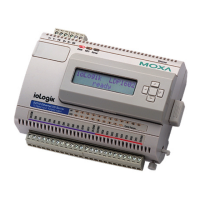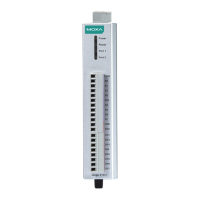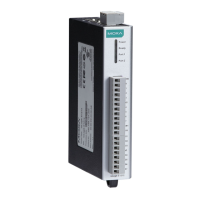ioLogik E2210 User’s Manual Click&Go Logic
5-5
The configuration window is where the rule is defined. There are two types of rules that can be defined:
Logic rules and peer-to-peer I/O rules. Logic rules are used for DI event-based triggers, whereas
peer-to-peer I/O rules are used for mapping I/O channels between two ioLogik E2210 servers.
The Equivalent Logic Statement at the bottom shows a real-time text-based summary of the rule that
you are defining. It can be a useful way to make sure that the rule is designed as you intended.
ATTENTION
When configuring input or output control or response values, you must select the unit of
measurement before entering a value. If you select a unit of measurement after entering a value, the
value will not be retained. Also, when an I/O channel is being used in a Click&Go Logic rule, the
channel’s range and units may not be modified.
Defining Logic Rules
IF Conditions
Under the IF column, you may set up to 3 sensor conditions that must be satisfied for the actions under the
THEN column to take place. Use the pull downs to specify the conditions and units of measurement (e.g.
DI(0)=OFF). The available operators are =,<,>,<=,>=.
Under Relation between condition, select AND to specify that all conditions must satisfied for the
action to take place; select OR to specify that any one of the conditions may be satisfied for the action to
take place.
A Time Trigger rule can be used to verify operation at regular intervals. For example, you can set a 3600
second interval so that a status TCP message is sent every hour. Note: When using Time Trigger with
pulse output, make sure that trigger interval is at least one second greater than the output pulse cycle.

